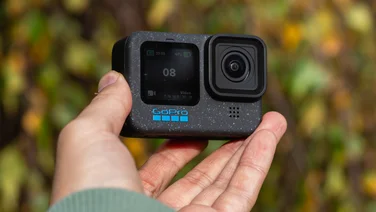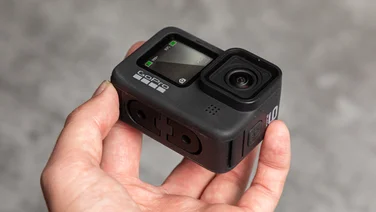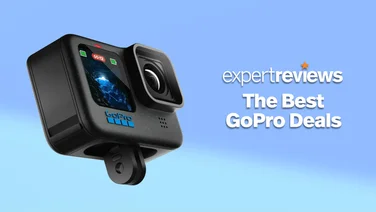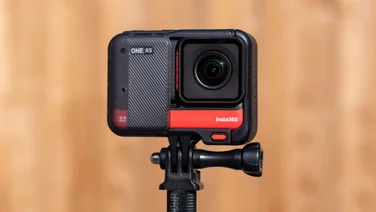To help us provide you with free impartial advice, we may earn a commission if you buy through links on our site. Learn more







- Light weight
- Great video and stills quality
- Object avoidance works well
- Object avoidance only works while flying forwards
Update: Since the Mavic Pro was first launched, DJI has launched three new compact and foldable drones, which means the Mavic Pro is no longer the all-conquering foldable drone it once was. The DJI Spark was designed to complement the Mavic Pro, offering 1080p video and DJI’s legendary flyability in a seriously small and lightweight package. It’s not as good as the Mavic Pro, but is much cheaper and just as fun to fly. DJI has also released a “Platinum” version of the Mavic Pro, which has slightly better battery life and flies a little quieter but is also more expensive.
It’s the DJI Mavic Air that takes the Mavic Pro’s title as the best drone money can buy, however. It’s a folding drone, just like the Mavic Pro, but even smaller and with better video quality and superior object avoidance as well. Essentially, it’s the perfect compact flying camera and the only downside is that it has slightly shorter flight time at around six minutes than the Mavic Pro.
You can read all about the DJI Mavic Air here, or continue on to read our original review of the Mavic Pro below.
Our original review of the DJI Mavic Pro continues below:
There are a lot of drones out there nowadays, but the Mavic Pro is the most responsive and stable one I’ve tried. It’s also fantastically portable, and supremely easy to fly: forget the “Pro” in the name, if you’re willing to make the investment, this is an ideal place for a beginner to get started.
Before getting airborne, you need to perform a quick “Haka” to calibrate the compass – that is, you simply spin the drone around horizontally and vertically. It’s also a good idea to connect your smartphone to the DJI remote control, which has built-in “legs” to hold it in place. This isn’t strictly necessary, but it lets you fly your drone using an easy touchscreen interface, and it also provides a live bird’s-eye view through the Mavic Pro’s 4K nose camera.
With this done, simply open the DJI app, tap the “take off” button and you’re in business. The drone immediately leaps into the air – then hangs there, eerily motionless. It won’t drift or wobble until you nudge the control sticks. When you do, it zooms off, reacting in an instant to the slightest touch.
READ NEXT: Best drones 2017
In fact, it’s so responsive that you should probably start off by engaging beginner mode, which restricts your speed and reduces the sensitivity of the sticks. Don’t get too anxious about crashing, though: the Mavic Pro has a set of built-in cameras and ultrasonic sensors that prevent it from colliding with obstacles. Beginner mode also limits how high and far you can fly while you’re familiarising yourself with the controls.
DJI Mavic Pro review: Flying modes
Once you’re ready to get more adventurous, you’ll find plenty of more advanced options and settings to try out. TapFly calls up a map of the area and lets you simply tap on a location to get your drone to fly there; you can also make the drone circle an object, pointing the camera at it the whole time, while Tracking mode uses the drone’s camera to automatically follow a subject around.
The drone can follow you around too: it will hug the ground and stay close as you walk, climb or ride up the side of a hill. Weirdly, however, it won’t follow you down again, so if you were hoping to capture aerial footage of a snowboarding or mountain-biking adventure, you’ll have to get someone to control it manually.

Once you get really cocky, you can also switch to Sport mode, which unlocks the Mavic Pro’s maximum air speed of 40mph. Be warned, obstacle-avoidance is deactivated in this mode, so if you’re not a careful flyer you could end up destroying your investment.
There are also a couple of modes intended specifically for photography and video recording: Gesture mode lets you wave at the drone to make it take a picture of you (though I found this very hit and miss) while Tripod mode dials down the controller sensitivity to a minimum, to help you capture smooth and steady video footage.
Frankly, whichever mode you’re in, images and video look great, with huge amounts of crisp detail and nice smooth motion.
DJI Mavic Pro review: Portability and range
Considering its impressive capabilities, it’s amazing how small the Mavic Pro is. For transport, its rotor arms fold neatly up against its fuselage, with the blades tucked neatly away. In this mode you can (just about) pick it up in one hand: it’s easily small and light enough to transport in a modestly sized rucksack. When you’re ready to fly, setting it up is the work of a moment: simply unfurl the legs and remove the transparent cowl that protects the camera and its three-axis gimbal.

Although small, the Mavic Pro has a huge range of 4.3 miles. That means, in theory, that you could be standing on Hampstead Heath and pilot the drone all the way down to Westminster to see what’s going on in Parliament Square. Of course, in practice, such a flight would be highly illegal – if you’re taking your first steps in drone flying, be sure to study the rules about flying drones in populated areas.
Long-range flyers will also appreciate the Mavic Pro’s maximum quoted flight time of 27 minutes on a full battery charge. That’s great by drone standards, and if the battery gets dangerously low (or if the unit loses contact with the controller) it will automatically fly home and – via clever use of the onboard camera – land on exactly the spot it took off from.
DJI Mavic Pro review: Verdict
Until recently, the Mavic Pro had a serious rival in the GoPro Karma – a similarly priced drone that benefited from a professional-grade action camera. However, that model has now been recalled by the manufacturer, following worrying reports of units suddenly losing power in mid-flight and falling out of the sky.

I’ve never heard of such a thing happening with a DJI drone. By contrast, the Mavic Pro feels supremely stable and reliable. More than that, it’s fun: you can enjoy the flying experience without having to worry about smashing into the side of a building, or careering into the ground.
Factor in the price – which undercuts DJI’s own Phantom 4 – plus the Mavic Pro’s excellent portability, and you’re looking at my new favourite drone. Beginners may be tempted to seek out something cheaper, but make no mistake: no matter whether you’re a novice or a flying ace, the Mavic Pro is very best drone you can buy.







